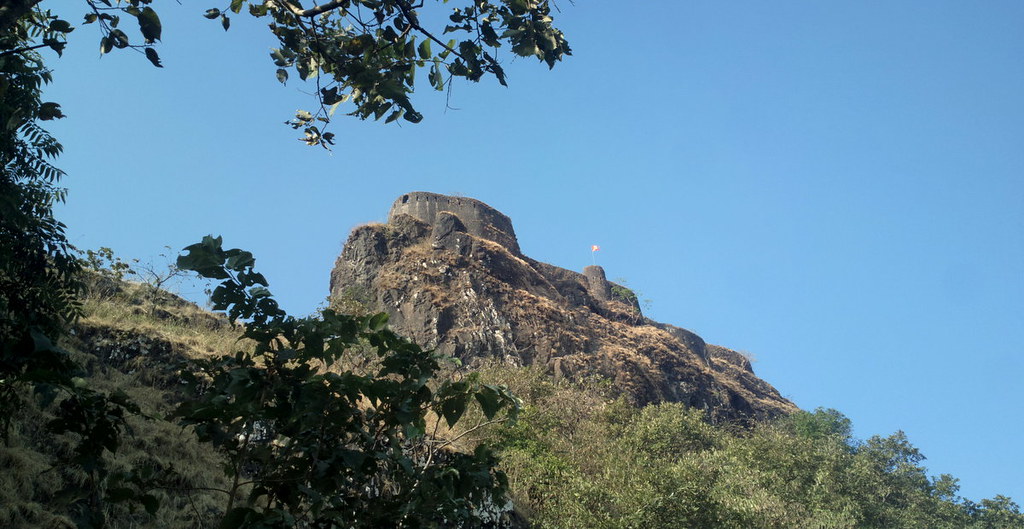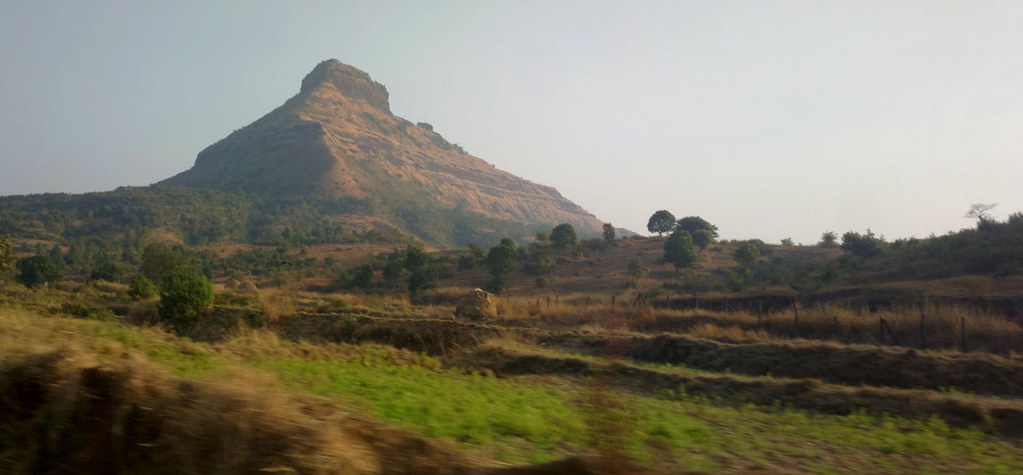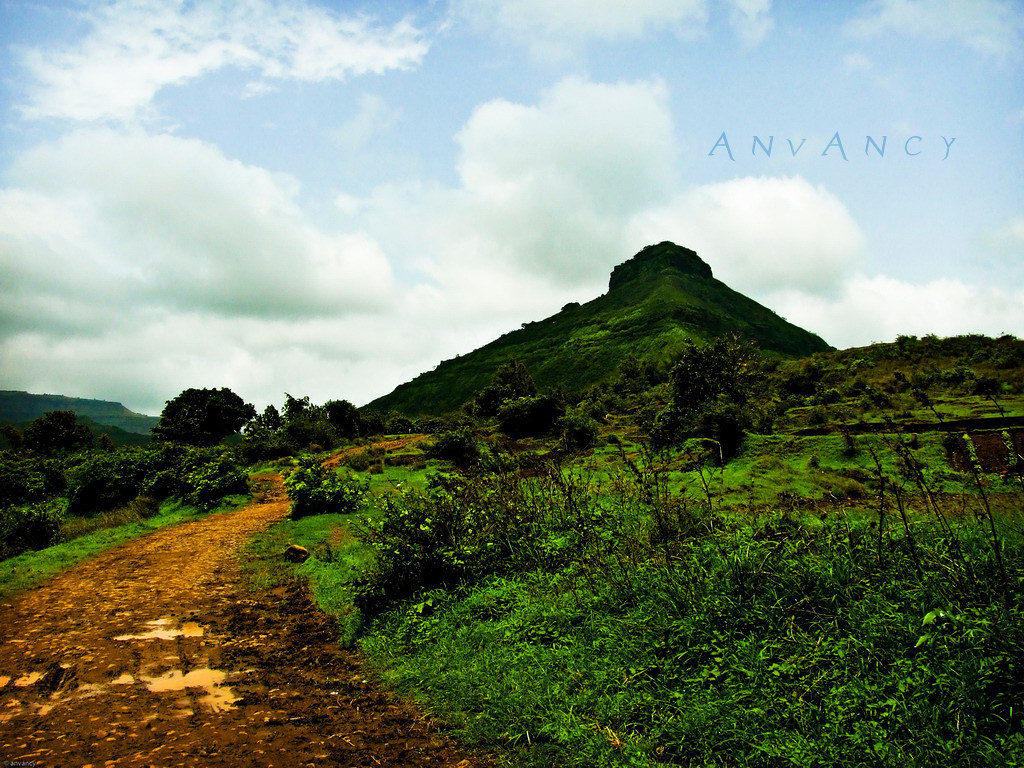Tikona Fort Trek Difficulty Level: What You Need to Know
Overview of Tikona Fort
Tikona Fort, also known as Tikona Fort, is a historic fort located in the Sahyadri mountain range in Maharashtra, India. The name "Tikona" means "triangular" in Marathi, referring to the fort's distinctive triangular shape. Here’s a simple overview of what makes Tikona Fort special:
Key Features
- Shape and Structure: The fort is known for its unique triangular shape and its well-preserved walls and gates. It stands out due to its sharp, pointed corners.
- History: Tikona Fort has a rich history dating back to the 16th century. It was originally built by the Chhatrapati Shivaji Maharaj, the founder of the Maratha Empire, to serve as a strategic watchtower and defense fort.
- Location: The fort is situated at an altitude of about 3,500 feet (1,067 meters) above sea level. It offers panoramic views of the surrounding Sahyadri range and the picturesque valleys below.
- Access: The fort is accessible via a popular trekking route, making it a favorite destination for adventure enthusiasts. The trek to the fort takes around 2 to 3 hours, depending on your pace.
- Features on the Fort: Once at the top, you can explore the fort's ruins, including ancient walls, a large water tank, and various temples. The summit provides stunning views of the surrounding landscapes.
Why Visit Tikona Fort?
- Scenic Views: The fort offers breathtaking views of the Sahyadri mountains and lush green valleys.
- Historical Significance: It’s a great place to learn about the Maratha Empire and the strategic importance of forts during that era.
- Adventure: The trek is an enjoyable experience with a mix of moderate challenges and beautiful scenery.
History of Tikona Fort
Tikona Fort, also known as Tikona Peth, is a historical fort located in the Pune district of Maharashtra, India. The fort is renowned for its triangular shape, which is reflected in its name ("Tikona" means "triangular" in Marathi). Here’s a brief overview of its history:
Historical Significance
- Origins: The exact date of construction of Tikona Fort is not well-documented, but it is believed to have been built during the 15th century. It was originally constructed by the Bahmani Sultanate, a medieval Muslim dynasty in the Deccan region.
- Strategic Importance: Tikona Fort was strategically important due to its location. It was used to control the trade routes between the Konkan coast and the Deccan plateau. The fort’s elevated position provided a vantage point for monitoring the surrounding region.
- Mughal and Maratha Periods: In the 17th century, during the reign of the Mughal Empire, the fort came under the control of various local powers. It was later captured by the Maratha Empire under the leadership of Chhatrapati Shivaji Maharaj. The Marathas utilized the fort as a stronghold in their efforts to establish control over the region.
- Decline and Abandonment: After the Maratha Empire's decline, Tikona Fort gradually fell into disuse. It was abandoned and became a neglected historical site. Despite its decline, the fort retains significant historical and architectural value.
Architectural Features
- Triangular Shape: The fort's unique triangular shape is a notable feature, contributing to its name.
- Gateways and Bastions: Tikona Fort has several gateways, bastions, and a large water tank. The fortification walls and bastions provide insight into the fort's defensive capabilities.
- Temples and Ruins: The fort houses several ancient temples and ruins, reflecting its historical significance and the various eras it has witnessed.
Cultural and Historical Legacy
- Tourist Attraction: Today, Tikona Fort is a popular trekking destination and a site of historical interest. Visitors come to explore its ruins, enjoy the scenic views from the summit, and learn about its historical past.
- Conservation Efforts: Efforts are ongoing to preserve and maintain the fort, ensuring that its historical significance is recognized and protected for future generations.

Trail Overview
- Location: Sahyadri Mountains, Maharashtra, India
- Altitude: Approximately 3,500 feet (1,067 meters) above sea level
- Duration: 2 to 3 hours (one way)
- Distance: Around 4 kilometers (2.5 miles)
The Tikona Fort trek is generally considered moderate in difficulty. This means it's a bit challenging but doable for most people who are in good health and have some trekking experience. Here’s why:
1. Terrain
The trek involves a mix of steep and gradual inclines. While the initial parts of the trek are relatively easy, the path becomes steeper as you approach the summit. The trail is well-marked but can be rocky and uneven in places, so sturdy footwear is essential.
2. Physical Fitness
You don't need to be an elite athlete to complete the Tikona Fort trek, but a reasonable level of fitness will help. Regular walking or hiking can prepare you for the ascent. If you're new to trekking, it might be a good idea to start with shorter, less challenging trails first.
3. Weather Conditions
Weather can influence the difficulty of the trek. The best time to go is from October to March when the weather is cooler and more comfortable. During the monsoon season (June to September), the trail can be slippery and more challenging due to rain and mud.
4. Duration
The trek to Tikona Fort typically takes about 2 to 3 hours to reach the top, with additional time needed for rest and enjoying the views. It’s a good idea to start early in the day to avoid the midday heat and to give yourself plenty of time to explore the fort at the summit.
Preparation Tips
- Wear Appropriate Gear: Comfortable trekking shoes, a hat, and sunscreen are essential. Carry a light rain jacket if you’re trekking during the monsoon.
- Stay Hydrated: Bring enough water to keep yourself hydrated throughout the trek.
- Pack Light: Carry only the essentials like snacks, a first-aid kit, and a camera for capturing the beautiful scenery.
Monsoon Season
The monsoon season in India typically runs from June to September, bringing heavy rainfall to various regions. For areas like Tikona Fort, the impact of the monsoon season is significant and affects trekking conditions and overall accessibility. Here’s a closer look at the monsoon season’s effects on trekking:
Impact on Trekking
- Slippery Trails: The heavy rains make trails slippery and treacherous. The risk of slipping and falling increases, which can make the trek challenging and dangerous.
- Landslides and Erosion: Monsoon rains can lead to landslides and erosion, especially in hilly and mountainous areas. This can obstruct paths and make certain sections of the trek unsafe or impassable.
- Muddy Conditions: The trails can become muddy and waterlogged, which can slow down progress and increase the physical exertion required to navigate the trek.
- Visibility: Heavy rains and mist can reduce visibility, making navigation more difficult and increasing the risk of getting lost.
- Increased Wildlife Activity: The monsoon season can lead to increased activity of certain wildlife, including insects and reptiles, which trekkers should be cautious of.
Precautions and Tips
- Check Weather Forecasts: Before planning a trek during the monsoon season, check local weather forecasts to avoid severe weather conditions.
- Proper Gear: Wear appropriate trekking gear, including waterproof clothing, sturdy trekking shoes with good grip, and a walking stick to help maintain balance.
- Stay Updated on Trail Conditions: Contact local guides or trekking organizations to get the latest information on trail conditions and safety warnings.
- Consider Safety: If conditions are too adverse, it might be best to postpone the trek to avoid potential hazards.
- Pack Essentials: Bring essential items such as a first aid kit, sufficient water, and high-energy snacks. Make sure to pack everything in waterproof bags to keep your belongings dry.

To reach Tikona Fort
From Pune
- By Car:
- Distance: Approximately 60 km (1.5 to 2 hours drive).
- Route: Drive from Pune towards Lonavala on the Mumbai-Pune Expressway. Exit at the Lonavala-Khandala toll booth and take the road towards Tikona Peth. Follow the signs to the base village of Tikona Fort.
- By Public Transport:
- Bus: You can take a bus from Pune to Lonavala. From Lonavala, you may need to hire a local taxi or auto-rickshaw to reach Tikona Peth, the base village.
- Train: Take a train from Pune to Lonavala. From Lonavala station, hire a local taxi or auto-rickshaw to reach Tikona Peth.
From Mumbai
- By Car:
- Distance: Approximately 100 km (2.5 to 3 hours drive).
- Route: Drive from Mumbai towards Lonavala on the Mumbai-Pune Expressway. Exit at the Lonavala-Khandala toll booth and follow the route to Tikona Peth.
- By Public Transport:
- Bus: You can take a bus from Mumbai to Lonavala. From Lonavala, hire a local taxi or auto-rickshaw to reach Tikona Peth.
- Train: Take a train from Mumbai to Lonavala. From Lonavala station, hire a local taxi or auto-rickshaw to Tikona Peth.
From Lonavala
- By Taxi or Auto-Rickshaw:
- Hire a taxi or auto-rickshaw from Lonavala to Tikona Peth. The drive is about 20-30 km and takes roughly 30 to 45 minutes.
Base Village: Tikona Peth
- Parking: There is parking available at Tikona Peth, the base village. Ensure you park in designated areas to avoid any inconvenience.
Additional Tips
- Check Local Conditions: Before traveling, verify local road and weather conditions, as these can affect travel times and accessibility.
- Local Guidance: If you are unfamiliar with the area, consider hiring a local guide to help navigate to the base village and start the trek.

Tikona Fort Trekking Guide
Embarking on the Tikona Fort trek is a rewarding adventure, offering both historical intrigue and scenic beauty. Here’s a simple guide to help you plan your trek to Tikona Fort:
Planning Your Trek
1. Best Time to Visit
- Season: October to March
- Weather: These months provide cooler temperatures and clear skies, making the trek more enjoyable. Avoid the monsoon season (June to September) due to slippery trails and heavy rains.
2. Getting There
- Starting Point: The trek typically starts from the base village of Tikona Peth.
- Access: You can reach Tikona Peth from Pune or Mumbai. Public transport like buses and trains are available, or you can hire a cab or drive yourself.
3. Trail Overview
- Distance: About 4 kilometers (2.5 miles) one way.
- Duration: 2 to 3 hours to reach the top, with additional time for exploring.
- Difficulty: Moderate. The trail involves some steep ascents and rocky sections.
What to Bring
1. Essential Gear
- Footwear: Sturdy trekking shoes with good grip.
- Clothing: Wear comfortable, moisture-wicking clothes and layers for varying temperatures.
- Rain Gear: A light rain jacket if you’re trekking during the monsoon season.
2. Supplies
- Water: Carry at least 2 liters of water to stay hydrated.
- Snacks: Energy-boosting snacks like nuts, fruits, or energy bars.
- First-Aid Kit: Basic supplies for any minor injuries or emergencies.
3. Extras
- Camera: For capturing the stunning views and historical ruins.
- Binoculars: Optional, for a closer look at the surrounding landscape.
The Trekking Route
1. Starting the Trek
- Base Village: Begin your trek from Tikona Peth. Follow the marked trail, which is well-trodden and relatively easy to navigate.
2. Trail Highlights
- Initial Ascent: The start of the trail is a gradual incline, making it a good warm-up for the steeper sections ahead.
- Steep Sections: As you get closer to the summit, the path becomes steeper and rockier. Take your time and rest as needed.
3. Reaching the Summit
- Fort Ruins: At the top, explore the ancient ruins, including the fort walls, water tank, and temples.
- Viewpoints: Enjoy panoramic views of the Sahyadri mountains and the surrounding valleys.
Safety Tips
1. Trek with a Group: It’s safer and more enjoyable to trek with others. 2. Stay on the Path: Follow the marked trail to avoid getting lost. 3. Listen to Your Body: Take breaks and don’t push yourself too hard, especially on the steeper sections.
After the Trek
1. Return Journey
- Descent: The trek back to the base is generally quicker but still requires careful navigation.
- Refreshments: You can find local eateries in Tikona Peth for a meal and refreshments after your trek.
2. Respect Nature
- Leave No Trace: Carry back all your trash and avoid disturbing the wildlife and local environment.
Conclusion
Tikona Fort, with its distinctive triangular shape and rich historical background, stands as a captivating destination for both trekkers and history enthusiasts. Built in the 15th century by the Bahmani Sultanate and later captured by the Maratha Empire, the fort's strategic importance and architectural features reflect its historical significance. Its elevation provided a commanding view of the surrounding trade routes, enhancing its role in regional control.
Today, Tikona Fort is celebrated for its scenic beauty and historical value. The trek to the fort, which involves navigating its steep and rugged terrain, offers rewarding views and a glimpse into its past. Visitors are drawn to its ancient ruins, temples, and panoramic vistas, making it a popular spot for exploration and learning.
Preserving Tikona Fort’s legacy is essential for appreciating the region's historical narrative and maintaining its allure for future generations. Whether you're drawn by the challenge of the trek or the fort's historical intrigue, Tikona Fort remains a testament to the rich cultural and architectural heritage of Maharashtra.
Hello! I’m,Ratndip a dedicated trekking enthusiast with a deep love for exploring the world’s most captivating trails. With over 2 years of trekking experience, I’ve had the privilege of hiking through stunning landscapes, from the majestic Himalayas to the lush Amazon rainforest. My journey into trekking started as a personal quest for adventure and has evolved into a lifelong passion for discovering new terrains and connecting with nature.
